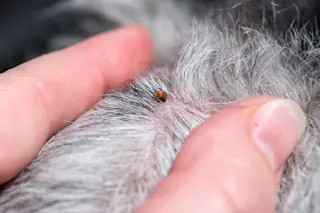1. It's your body's largest organ, despite what the readers of Maxim think.
2. An average adult's skin spans 21 square feet, weighs nine pounds, and contains more than 11 miles of blood vessels.
3. The skin releases as much as three gallons of sweat a day in hot weather. The areas that don't sweat are the nail bed, the margins of the lips, the tip of the penis, and the eardrums.
4. Ooh, that smell: Body odor comes from a second kind of sweat—a fatty secretion produced by the apocrine sweat glands, found mostly around the armpits, genitals, and anus.
5. Yum! The odor is caused by bacteria on the skin eating and digesting those fatty compounds.
6. Breasts are a modified form of the apocrine sweat gland.
7. Fetuses don't develop fingerprints until three months' gestation.
8. Without a trace: Some people never develop fingerprints at all. Two ...















